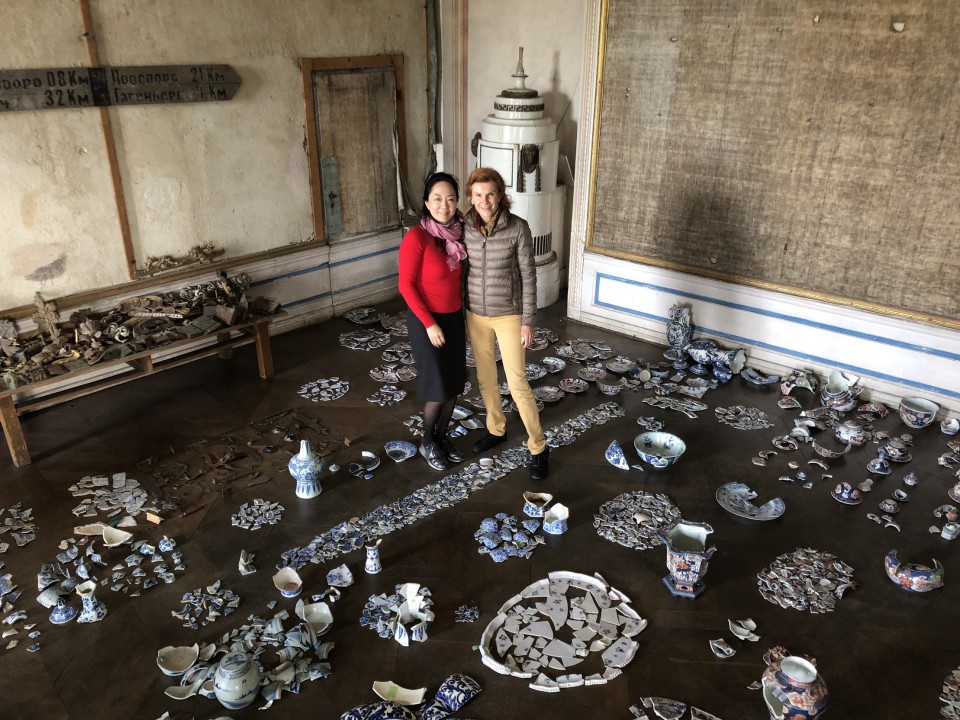Japanese porcelain of the 16th and 19th centuries was mainly produced for European aristocratic houses.
The porcelain collection of the Piatti family was founded in the 18th century (ca. 1760) and expanded over generations with valuable pieces.
Before the family had to flee from the Russian soldiers during the Second World War, the valuable porcelain was hidden in the cellar of Loosdorf Castle.
The hiding place was betrayed to the Russian occupiers and then smashed into thousands of shards with unimaginable destructive fury.
All the shards were collected after the family's return and placed in the so-called "shard room" in the museum.
Porcelain collection in Japan
The collection was analysed by a Japanese university on site in 2015 and officially confirmed as Japanese cultural property.
A large part of the collection was subsequently restored in Japan by world-renowned restorers with the great assistance of Ms Machiko Hoshina.
The aim was, among other things, that the shards find "peace" again through restoration in their country of origin, Japan.
Parts of the collection were presented at the "Spouse Program" of the G20 Summit in Osaka.
Porcelain collection today
After numerous exhibitions in Japan, the porcelain collection has been back in Loosdorf Castle since the end of 2022.
In the next few years, the collection will be elaborated by the University of Applied Arts Vienna as part of the "Broken Collection" project.
Among other things, the main topics of restoration, conservation and art history will be examined and dealt with in greater detail.
